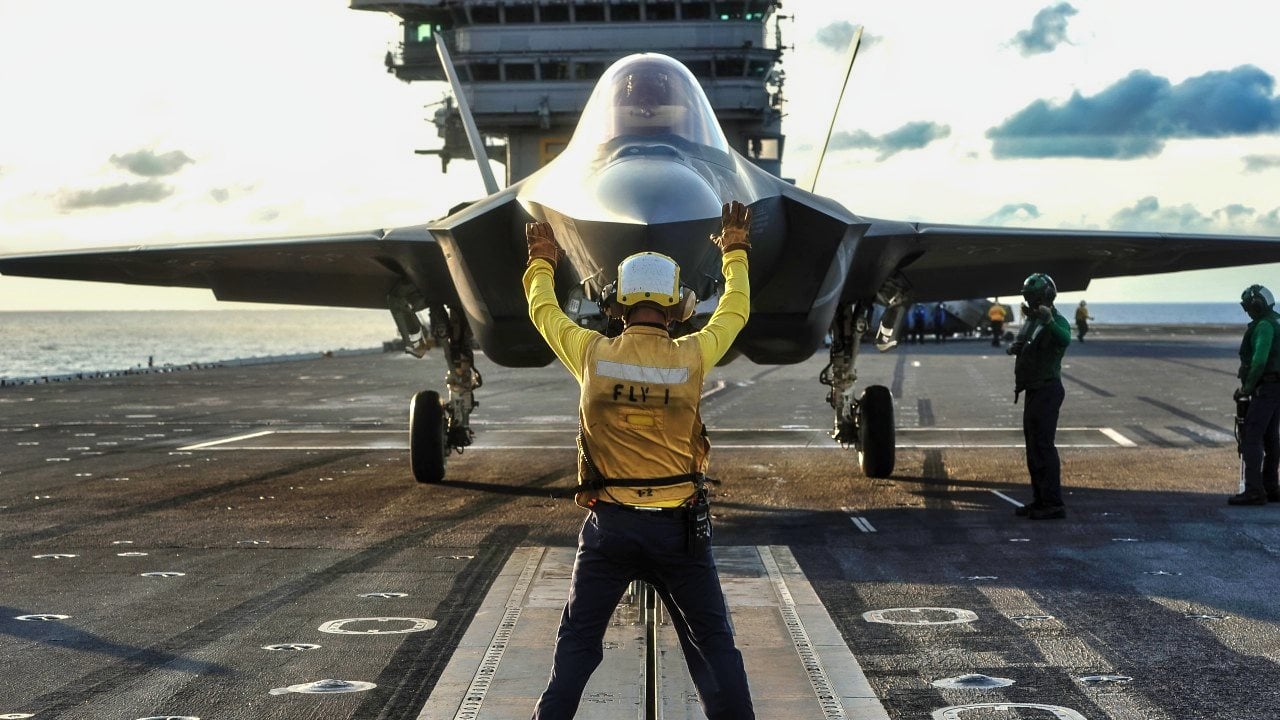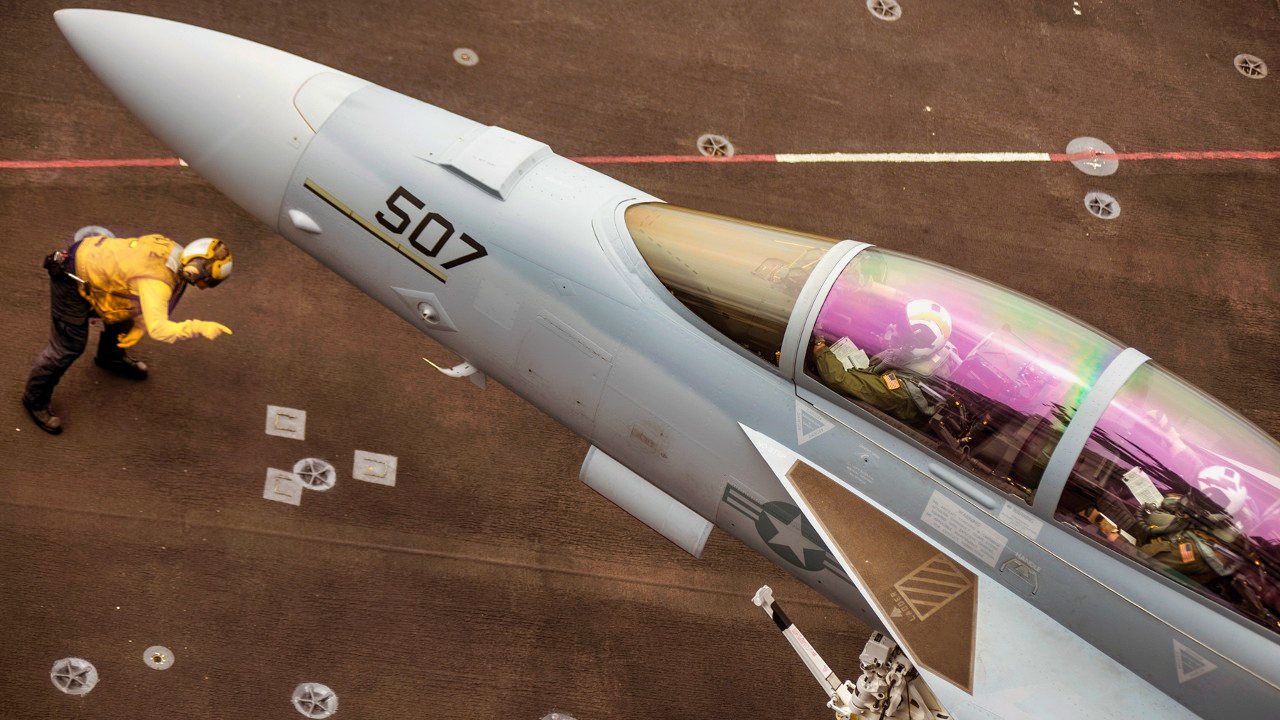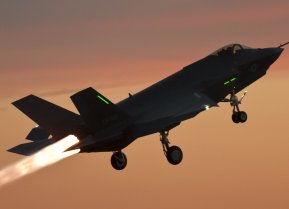DF-26: China's Missile Built to Sink A Navy Aircraft Carrier?
If the DF-26 missile is indeed a capable killer of US vessels, the Chinese will have a relatively cheap way to thwart expensive and difficult-to-replace US vessels.
Summary: The DF-26, also known as the "Guam Express," is an IRBM with a range exceeding 3,100 miles. It can carry both nuclear and conventional warheads and is capable of targeting ground or naval targets. The article highlights concerns about the DF-26's ability to target U.S. military installations in the Indo-Pacific, including Guam, and its potential to be used in a first-strike scenario in a nuclear exchange and attacks against U.S. naval assets like aircraft carriers.
Meet the DF-26
With China’s “rise” to peer-status seeming more and more like an inevitability, US observers are paying particularly close attention to China’s warmaking abilities. America still has the world’s largest military budget, and world’s most capable fighting force. But the Chinese are working to close the gap – commiserate with their increasing territorial assertions throughout the Indo-Pacific region – and indeed, in some respects, have opened up a gap themselves.
China has made great strides to improve their military capabilities. In the air, the Chinese have unveiled a fifth-generation fighter, the Chengdu J-20 Mighty Dragon, which is understood to be a espionage-enabled clone of the Lockheed Martin F-35 Joint Strike Fighter.

Meanwhile, at sea, the Chinese are engaged in one of world history’s most ambitious shipbuilding sprees. In fact, the Chinese have surpassed the US in terms of ship quantity, and may now boast the world’s largest navy. Most notably, the Chinese recently launched it’s first supercarrier, the Fujian. America still has eleven supercarriers – far more than any other nation on Earth.
But the Chinese are demonstrating a willingness to match American capabilities. Or at least nullify American capabilities – with weapons that the American carriers cannot (at least according to many experts), at present, defend against, like the DF-26 intermediate-range ballistic missile, which the Chinese have begun to stockpile.
The DF-26 Missile Looks Like a Threat
The Dong Feng-26 (DF-26), or “East Wind-26,” is an intermediate-range ballistic missile. Produced by China Aerospace Science and Technology Corporation (CASC) and deployed with the People’s Liberation Army Rocket Force, the DF-26 has a range exceeding 3,100 miles and the ability to execute precision strikes with either nuclear or conventional ordnance. The DF-26 can target ground targets or naval targets - like aircraft carriers.
Overall, the capabilities of the DF-26 are particularly concerning to the Americans. The DF-26 has the range required to target US military installations in the Indo-Pacific, including critical installations at Guam (accordingly, the DF-26 has been referred to as the “Guam Express”). The ability to load the DF-26 with a nuclear warhead makes the missile an ideal candidate for first strike scenarios in a nuclear exchange with the US.

And, the fact that the DF-26 can be toggled to target naval targets is especially concerning. In a conflict with China, the US would rely heavily upon their carrier force – which, with the support of a Carrier Strike Group, and its own airwing, would be difficult for Chinese forces to nullify with their own naval or air forces.
Yet, the DF-26 could offer something of a magic bullet for Chinese forces hoping to strike US carriers from the equation. Of course, the DF-26 can target any US vessel – not just aircraft carriers, although the carrier is the crown jewel of the US fleet.
“China has made major additions to its stockpile of an anti-ship ballistic missile sometimes referred to as a “carrier killer,” indicating its role in a potential conflict would almost certainly be beyond just flattops,” Business Insider reported.
As a Congressional report indicated, “China increased the number of intermediate-range ballistic missiles from 300 in 2021 to 500,” demonstrating that China places a high value on the DF-26 in a potential conflict with the US.

“With an increase in DF-26 stockpile over the past year, China is clearly investing in a capability that can defeat defenses and effectively batter a variety of targets,” Business Insider reported. “That could spell trouble for not only US aircraft carriers that the People’s Liberation Army Rocket Force (PLARF) would target should the two titans got to war but also other American ships as well.”
Is the DF-26 a real threat?
Some observers question whether the DF-26 indeed poses a legitimate threat to US ships, suggesting that perhaps the DF-26 has been over-hyped.
It’s true that the missile's effectiveness has not been concretely demonstrated; for example, there has been a test against a non-cooperative naval asset.
But the fact that the Chinese military has allocated its finite resources towards stockpiling 500 of the DF-26s suggests that the Chinese believe in the capabilities of the weapon (or its just an expensive bluff). Writing the DF-26 off as an over-hyped, unproven piece of tech could be Western wishful thinking.
And if the DF-26 is indeed a capable killer of US vessels, the Chinese will have a relatively cheap way to thwart expensive and difficult-to-replace US vessels.
“In a war at sea the PLA, if it had the inventory to do so, would be perfectly happy to trade a missile (or several), costing perhaps in the order of US $20 million each, for a destroyer that would cost billions to replace,” former US Navy submarine commander Tom Shugart wrote on X.
If the DF-26 is in fact legitimate, the US may be forced to rethink its strategy in the Indo-Pacific.
About the Author: Harrison Kass
Harrison Kass is a defense and national security writer with over 1,000 total pieces on issues involving global affairs. An attorney, pilot, guitarist, and minor pro hockey player, Harrison joined the US Air Force as a Pilot Trainee but was medically discharged. Harrison holds a BA from Lake Forest College, a JD from the University of Oregon, and an MA from New York University. Harrison listens to Dokken. Email the Author: [email protected].
All images are Creative Commons.


